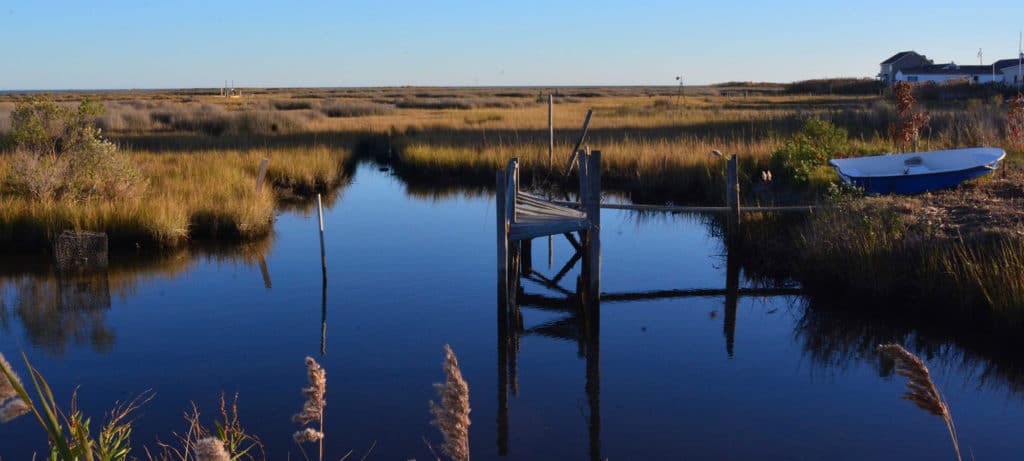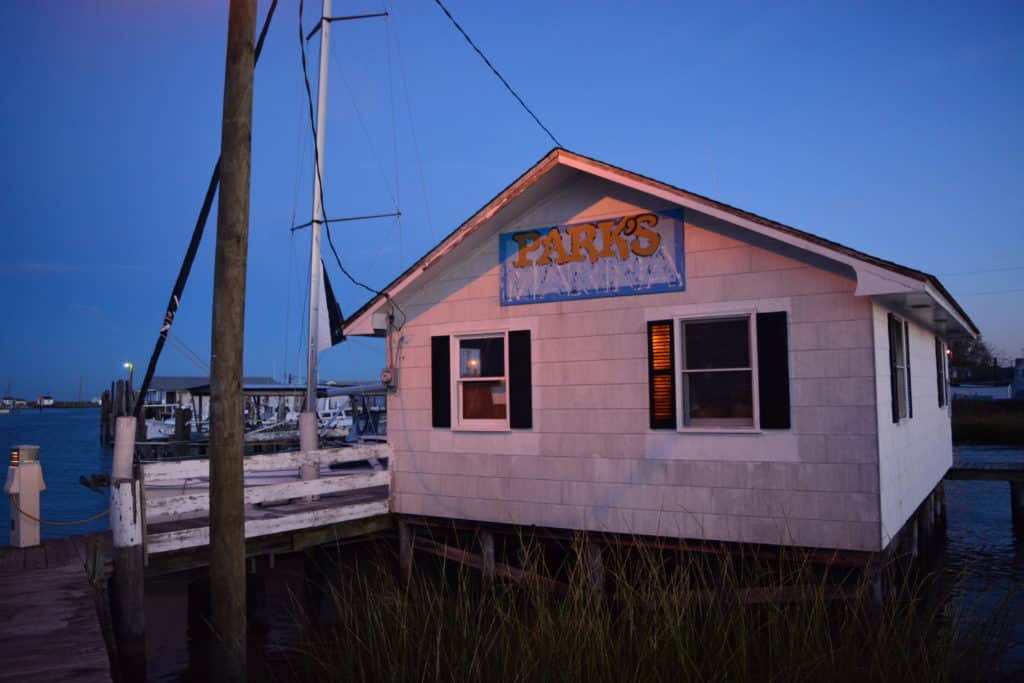
After three months and 5,000 miles on the road, we finally found the right boat for us in Annapolis, Maryland: a 1986 Tayana 42. My wife, Sandy, and I were six days into our shakedown cruise south on the Chesapeake and had just spent a wonderful three days on Solomons Island, and we were enjoying our new cruising life.
It was a blustery day when we headed out that morning from Solomons in 20- to 25-knot winds, and we were looking to make a 40-mile run just past the mouth of the Potomac River. Giving the Potomac a very wide berth put us on the eastern side of the bay, near Tangier Island, in Virginia. In building seas and wind, an accidental jibe and crab pot conspired to leave us with a broken boom on deck and no propulsion. Our only option was to stop at Tangier — a place that seemed about as far from civilization as you could get.
Based on the charts and Active Captain reports, there are not many anchorages suitable for deeper-draft sailboats on this side of the bay, and Tangier itself had absolutely no services — no chandlery, hardware store or marine yard — though our boat needed help. At a minimum, we’d need the boom welded (not recommended by any spar builder) and quite possibly a new transmission and a haulout to remove the line tangled in the prop. We’d also need a good mechanic, as the engine had died on us for some unknown reason. (Remember, we were very new to the cruising life.)
Milton Parks, the owner of the only marina, met us at the dock at about 1600, along with a couple of other stranded sailors who couldn’t leave because of the weather. Dazed and drained on this cold October day, Sandy and I secured the lines and were happy to go below for the night and try to process just how we’d recover from such a horrific day and breakdown.
We were still in denial the next morning when there was a knock on the hull at around 0900. I could have slept until noon, but managed to climb into the cockpit to find a guy who looked like a fishing Santa standing on the dock in overalls with his 9-year-old daughter in hand. Todd invited himself aboard, and since I was too tired to ask who he was and why he was there, I said sure. It turned out to be the best decision this captain has made so far.
After an hour of hearing his tales of cruising and how he found the island, we managed to get the engine started. Progress! From there we wandered the streets of Tangier, and Todd put out the word that we needed help. We were back on the boat at noon, and all afternoon were greeted by an endless parade of Tangier locals stopping by to offer their services. Lee, a recently returned local and mechanic, identified the engine and transmission issues (genius); a 15-year-old boy without a swim mask came by at sunset to cut the crab-pot lines off our prop; and Milton, whose family built and owns the marina, opened up his tool shack, with an endless bounty of random parts.

Tangier Island is about halfway down Chesapeake Bay on the Eastern Shore. European settlement on the island began in the mid-18th century, though the Pocomoke Indians inhabited the island long before that. The last census, in 2010, lists its population at 727.
Although situated in the busy bay, Tangier is remote and isolated. How isolated? Getting there is only possible by boat or the daily mail ship that runs from Crisfield, Maryland, an hour and a half north of the island. There is also an airport, but as far as we could see, only the Coast Guard seems to use it. Tangier has very little cellphone service. I had to wander around the island, and on occasion I could send a text and sometimes, if the wind was just right, make a quick call (a problem, since my boat is also my remote office). There is no public Wi-Fi service, although the joint crab shack and ice cream store in the middle of town leaves its Wi-Fi on in the offseason. I eventually got the password from the local teens, and this became my daytime office. I sat out on the patio on wood benches, cranking out my work while watching the locals pass by, who probably wondered just what in the heck I was doing.
The upside of Tangier is that it’s incredibly beautiful if you take time to explore. Relax, meander, chat up the locals, kick a can down a path, and let the peacefulness settle in. A Sunday potluck after church is quite special, as is the daily ritual of unloading the mail ship. The west coast has wonderful beaches, and the interior has great expanses of marsh with tall sea grass and winding canals. Once we settled in and focused on the people and scenery rather than our daunting boat repairs, we realized just how special Tangier really is.
Tangier is also a very religious island. There are no bars and no alcohol for sale anywhere. As Milton said, “We follow the old ways,” which is probably why everyone was so willing to help out a soul in need. There are only a few cars; most residents travel by golf carts and scooters.
Over the next 11 days, Sandy and I were fortunate to get to know Milton and so many others. Milton took us for a golf-cart tour of the island, which was a highlight of our stay. His family were some of the founding settlers. At 84, Milton just calls all the island men “George” and the ladies “honey,” as he jokingly says it’s too much to keep up with everyone’s name. We had him on board one night for dinner and then watched football on his TV. Ask any cruiser who has met him, and you’ll know just how special this guy is and how fortunate you are if you take time to get to know him.
Sadly, we learned that Tangier Island is slowly disappearing. With the island now just a tad over 4 feet in elevation, rising sea levels could cover the land in as little as 50 years, experts say. In the mid-1800s, the island measured 2,050 acres; today it’s around 740. A way of life that’s been here for more than 250 years could be underwater in the near future.
Tangier is a special stop on a Chesapeake cruise, and it turned out to be one of our favorites. Misfortune may have brought us there, but we had the good fortune of experiencing a beautiful island with an outstandingly generous people.
— David Gillespie








